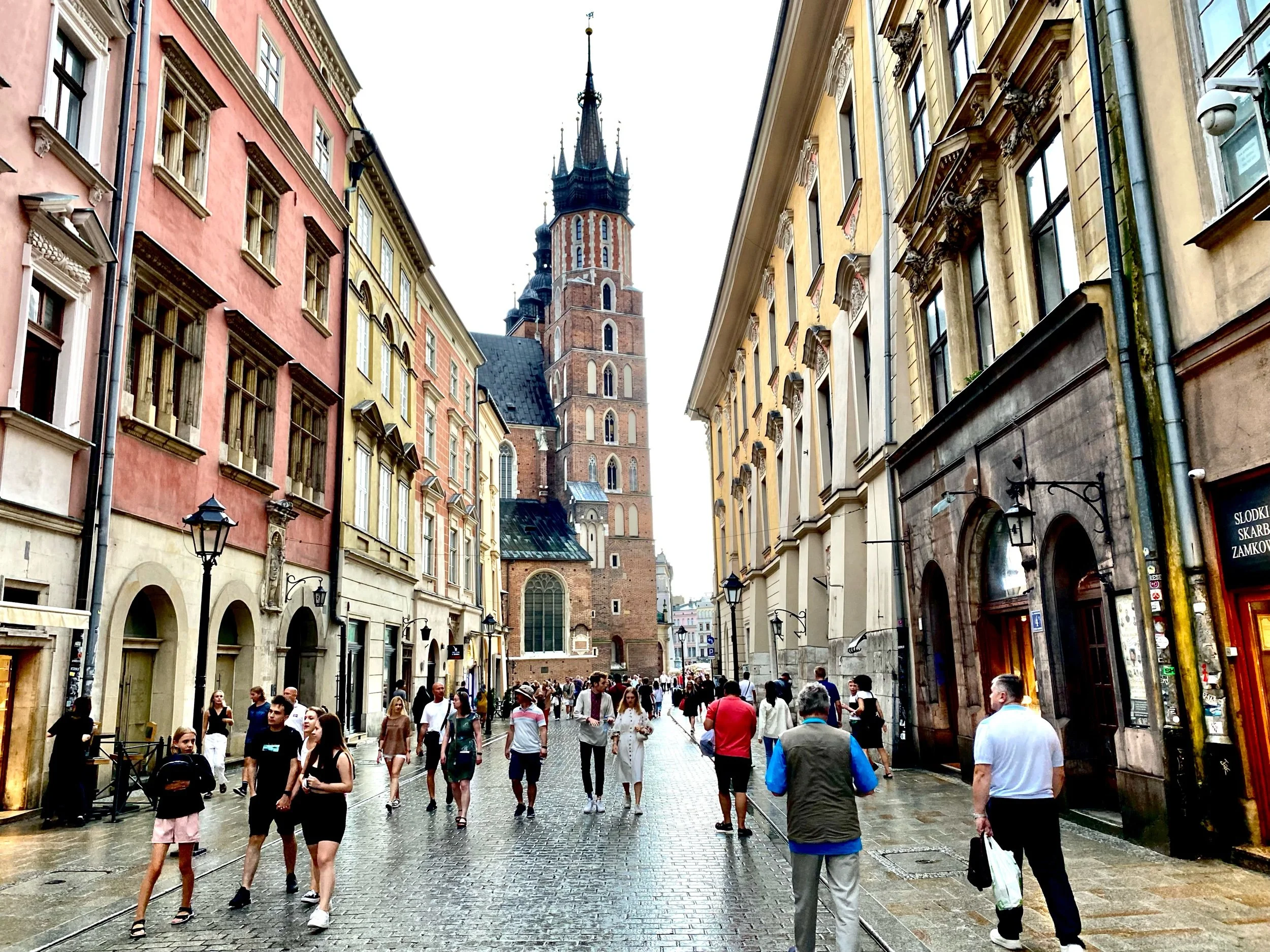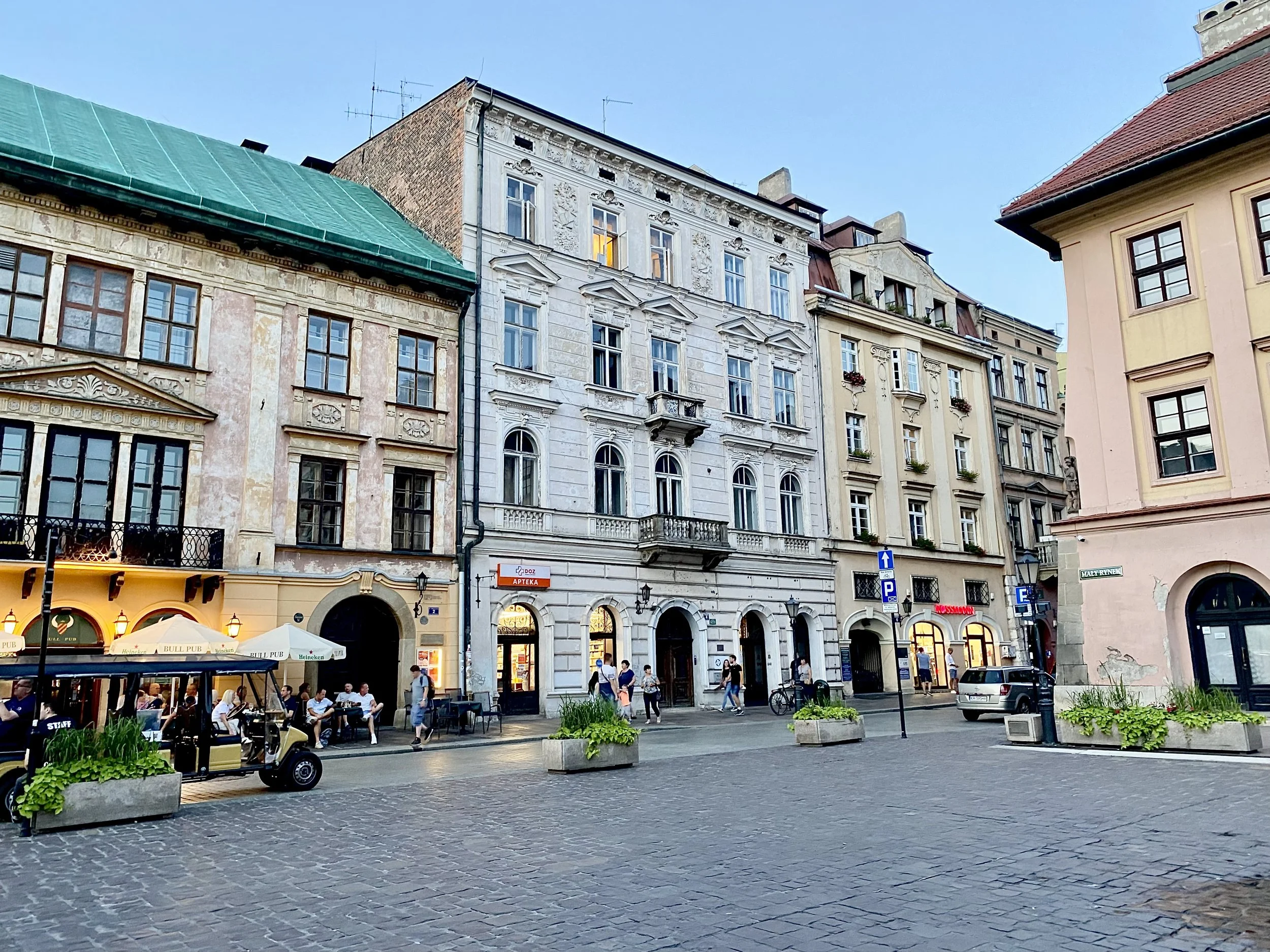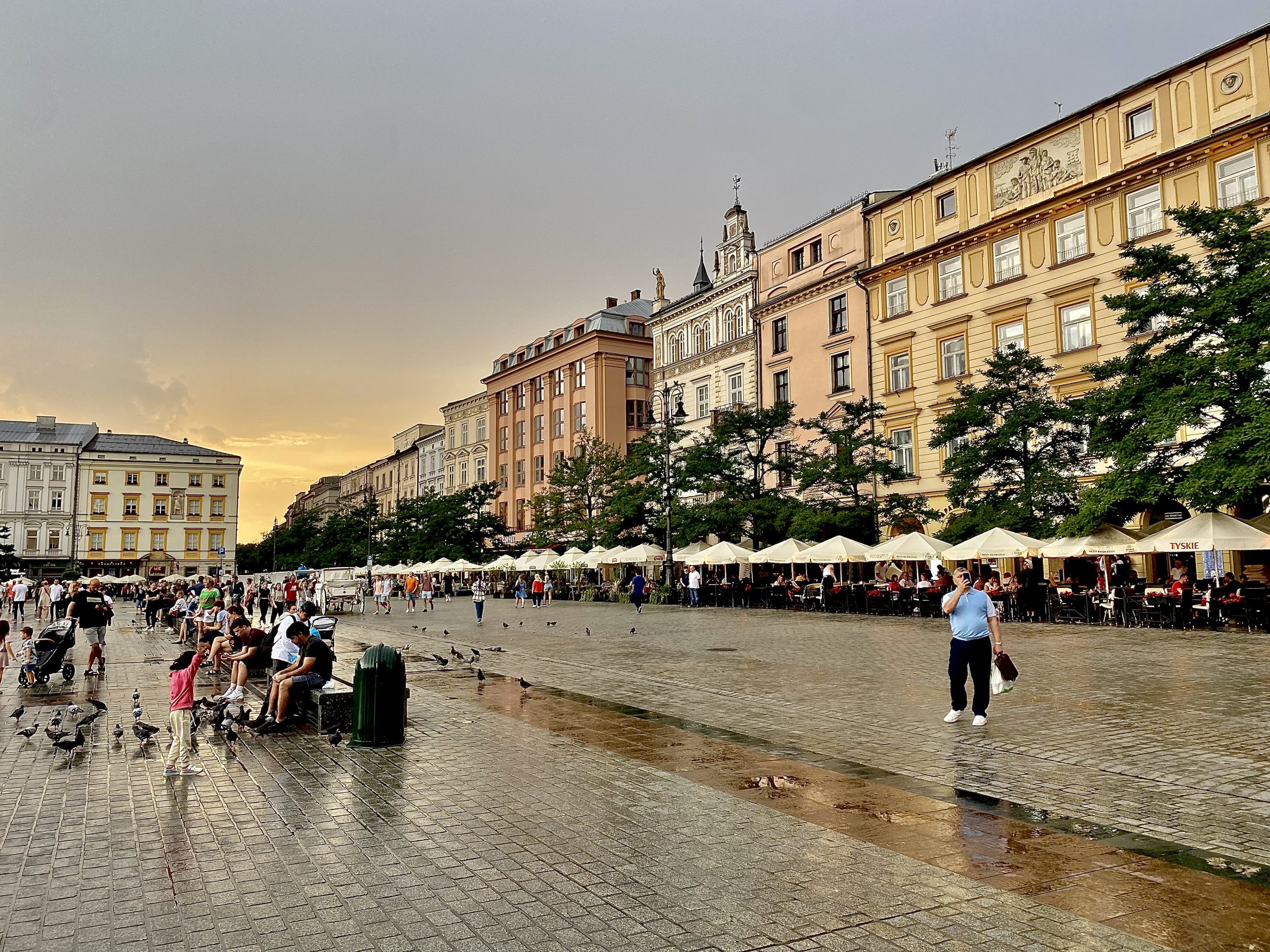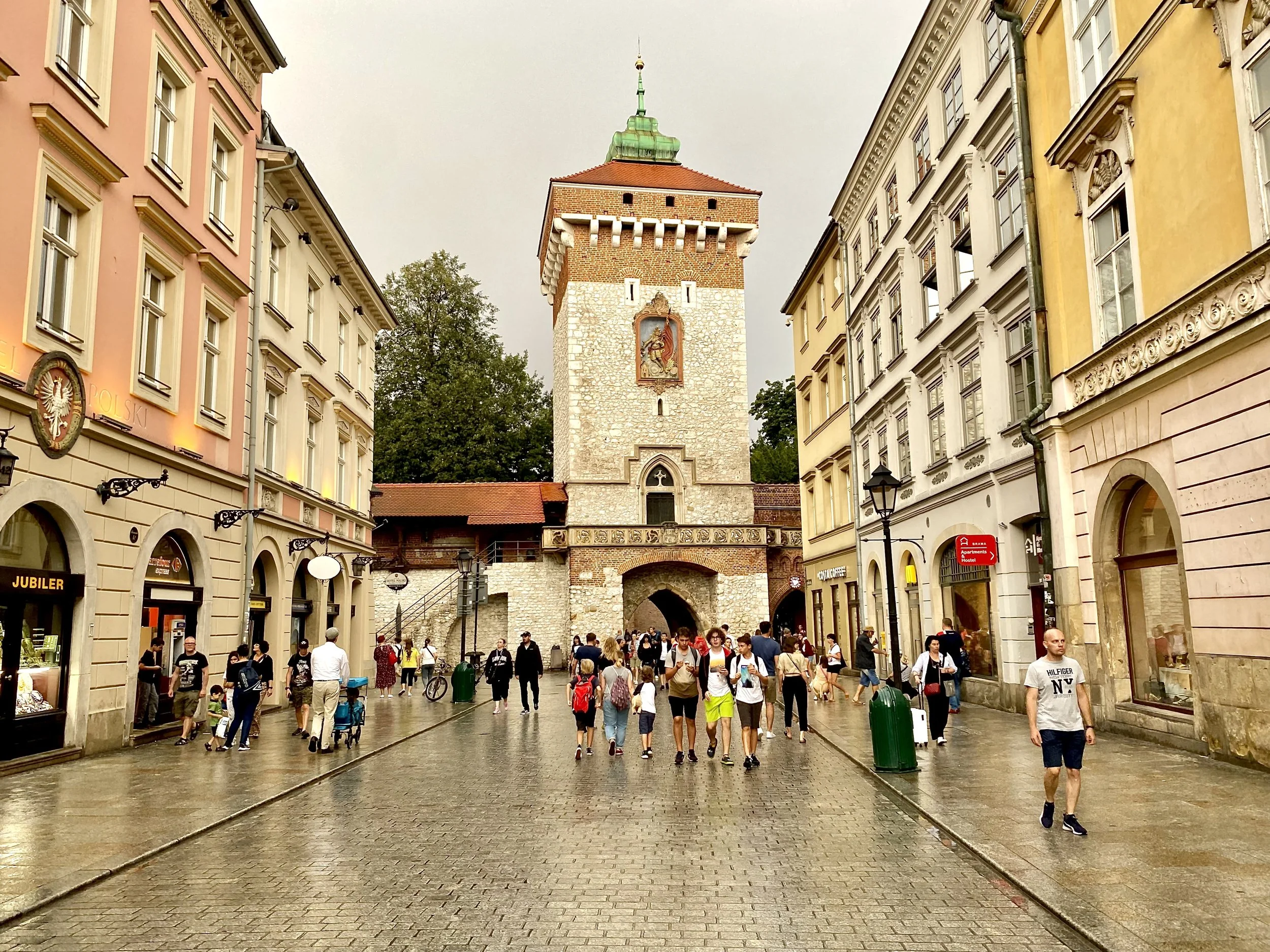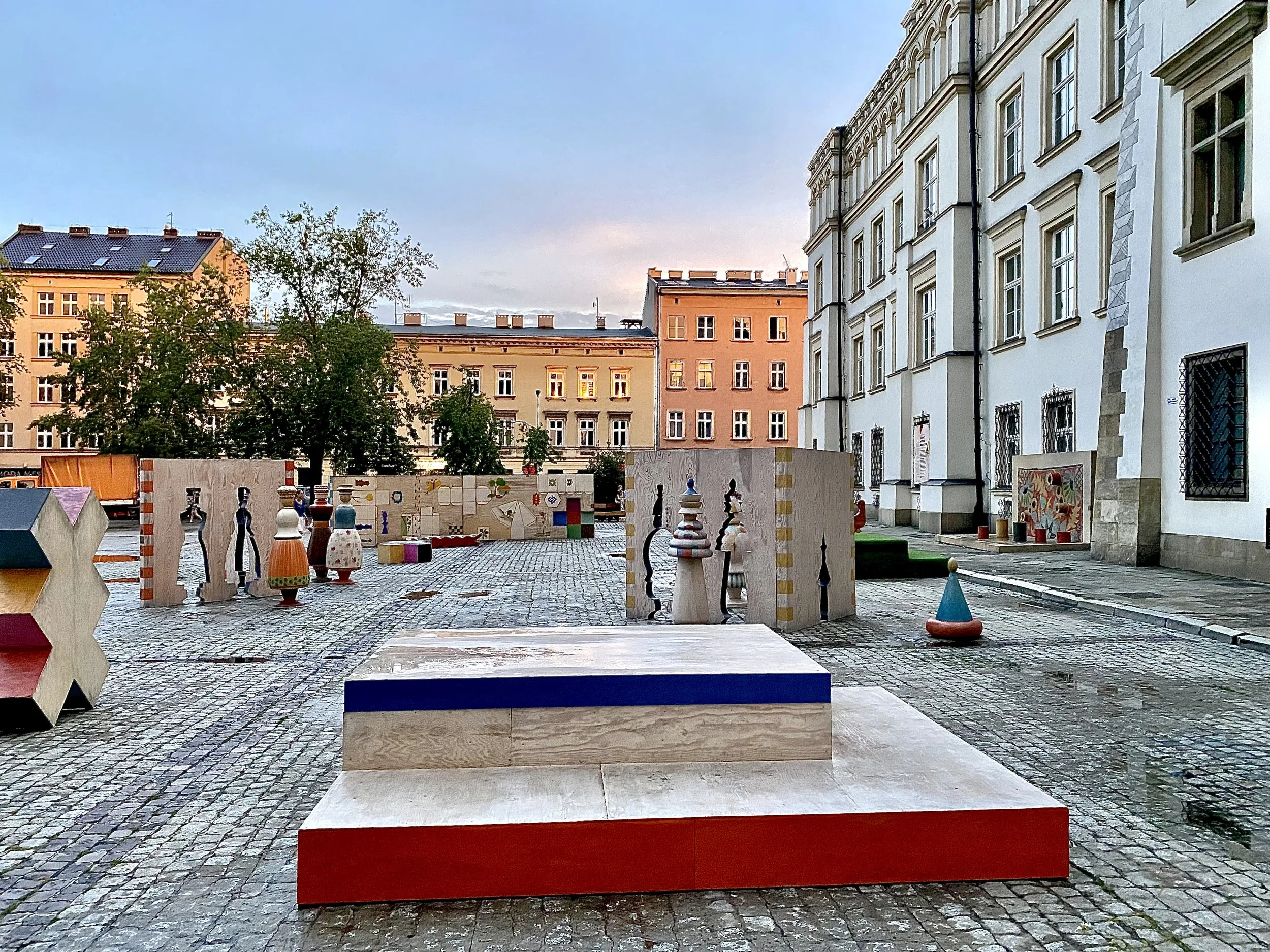Krakow is Worth Raving About
A CITY THAT SURPASSED ALL OF MY EXPECTATIONS
I have been really excited to explore Poland because the country is central to one of my life’s many “what-ifs.” After I graduated high school in the US, I did one more year of high school on exchange in southern Thailand. When I was choosing which country, I was torn between Thailand and Poland, and my final choice was a bit impulsive / last-minute. I sometimes wander into the thoughts of - what if it had been Poland instead? I’ve long yearned to put a visual, a language, and a group of people to that fantasy. I had high hopes for the country - a place that for absolutely no reason I’d long assumed was underrated - and Krakow greatly exceeded my already inflated hopes.
For a long time, Krakow was the capital of Poland - and today it’s still a major academic and cultural center of the country. I hadn’t realized that Krakow is often cited as one of Europe’s most beautiful cities - but once I arrived I very quickly reached that conclusion for myself. Its medieval historical district is well-preserved, colorful, walkable, and deeply charming. While it does have a steady flood of tourists, it doesn’t feel overwhelming - partly because the streets and squares are so wide that it’s never cramped, and partly because the way they are catered to is actually quite charming. Krakow is also an important hub for day trips - most famously to go to the Auschwitz Concentration Camps.
Worth noting here is that Poland, including Krakow, is a very affordable section of Europe. My hostel was about $15 a night for a 6-person dorm, and that price included breakfast, snacks and dinner (which within that, included unlimited beer). If you’ve always assumed Europe is financially out of reach, if you ever find a cheap flight to Poland, you’ll find it’s very much not the truth.
STROLL THROUGH OLD TOWN
Old Town Krakow is one of the first ever UNESCO world heritage sites - a well-earned designation. Of the cities I’ve visited, it ranks among the top three old towns in Europe for me (probably tied with Riga, below Edinburgh). It’s been made highly pedestrian and is fairly small - so it’s easy to just wander around and explore within a day. I’d recommend starting near the Main Square - the largest medieval square in Europe - where you can see St. Mary’s Basilica (which sounds the trumpet every hour) and the Cloth Hall (which still hosts stand vendors).
From there, you can move outwards throughout the city, wandering as aimlessly as you want. The city wall has been taken down and replaced with a park (Planty Park), though parts are still in tact - like St. Florian’s Gate to the north. On the Southern edge of Old Town is Wawel Castle and Wawel Cathedral - situated on a walled hill where the first hamlet within Krakow was formed.
While Old Town does definitely cater to tourists - it often does so in a charming way. While I am not a fan of horse-drawn carriage rides for show, I will admit that the abundance of them in the Main Square creates a timelessness to the entire section. A lot of the kitschy businesses offer local foods (like pierogies and stuffed cabbage) and crafts, instead of just magnets and t-shirts. The overall result is charming - it allows you to suspend disbelief and just be present in the beauty of the moment around you.
ENJOY A NIGHT OUT IN KAZIMIERZ
Kazimierz, the Jewish Quarter, is part of Kraków’s historical quarter world heritage site. The buildings here are charming, though less preserved and beautiful than those in Old Town. What makes this section shine is the nighttime economy, which is exciting, local, and more edgy. I recommend heading down to this area around dinner time, grabbing food at Okraglak (an outdoor food market), and then exploring the local businesses while the sun comes down. Here, you’ll see a cooler, more vibrant edge to Krakow.
TAKE A DAY TRIP TO AUSCHWITZ
The Auschwitz Concentration Camps are about a 90 minute drive outside of Krakow and it’s easy to book a group day tour once you’re in the city (for between $30 and $40). The trip will take most of your day, expect 7 to 8 hours, and probably most of your day’s energy - but it’s well worth it.
The Auschwitz Concentration Camps are the site of the greatest (known) mass murder in human history - where 1.1 million were murdered in gas chambers, mostly Jews, usually as soon as they got off the train. Much of the camps were destroyed in the last days of the war as the Nazis rushed to destroy evidence of their war crimes, including the most active gas chambers and crematoriums. The parts remaining have been made into a memorial and museum - so that the world can come to remember the atrocities that occurred.
I think for everyone I talked to that went, the trip did not have the heavy, emotional experience we were all expecting. Perhaps this is a blessing - because each of us expected to find ourselves crying, forlorn, and to leave with some kind of sensation that was hard to shake. While we all did have a meaningful experience, one that brought home the reality and humanity of what happened - rendering it from the textbooks into our emotional brains - none of us left emotionally wrecked.
The truth is the camps are kind of pretty - surrounded by natural beauty and full of nice brickwork - and are now well-maintained and clean. That softens (maybe sanitizes) the experience of learning about what occurred there - allowing visitors to stay fully present without the experience becoming too much. Within that, the museum is brilliantly curated - fully displaying what happened without doing anything emotionally manipulative or creating an environment for visitors to insert themselves / make it about them - and always being respectful of both those that perished and survived.
Some of the most compelling sections are a room with thousands of pounds of human hair from the murdered (which was shaved off by the Nazis to be made into textiles), a room full of confiscated suitcases that had the owners’ names on them, and a hallway lined from start to finish with photos of camp prisoners. These sections are horrifying but never overwhelming - always allowing you to fully process the atrocities that occurred there.
OTHER THINGS TO DO
Krakow is so thoroughly charming that I don’t recommend packing your days - and instead making sure you have lots of time to just soak in your surroundings. If you find yourself with some extra time, though, here are some things to do:
Head to the Salt Mines: The second most common day trip out of Krakow is to Wieliczka Salt Mine which showcases historical mining equipment, an underground lake, and several underground chapels formerly used by the miners.
Visit Schindler’s Factory: Now a museum, the enamel factory that Schindler used to save more than 1,000 Jewish lives currently hosts exhibitions about the Nazi occupation of Krakow.
Walk Along the River: The Vistulan Boulevards offer a long, beautiful riverfront walk that you can take for several miles.
You’ll find lots of store fronts in Old Town offering day trips and tours. Krakow is a city you can come entirely pre-planned and make up as you go. In fact, I’d actually recommend doing it that way.

